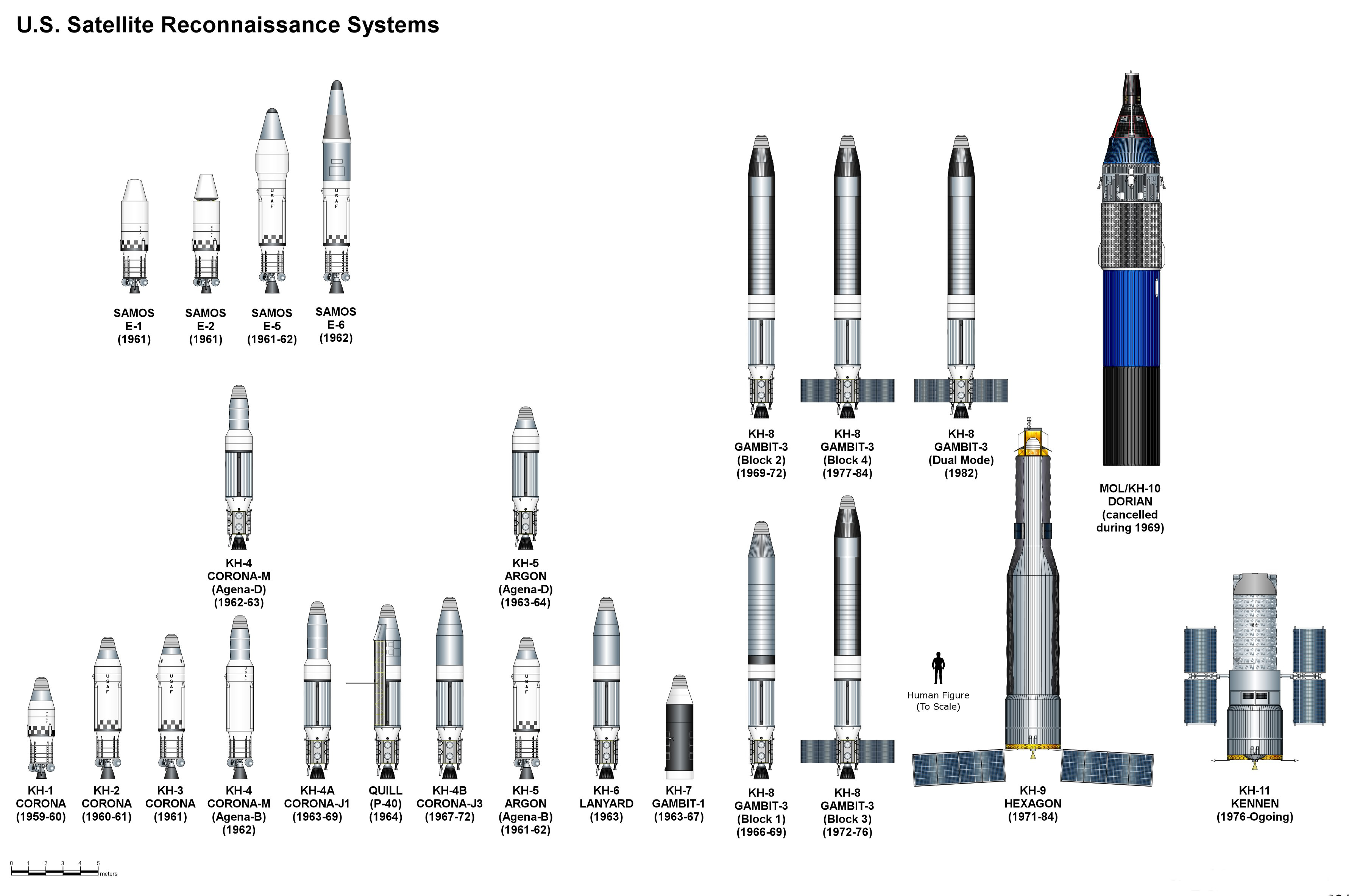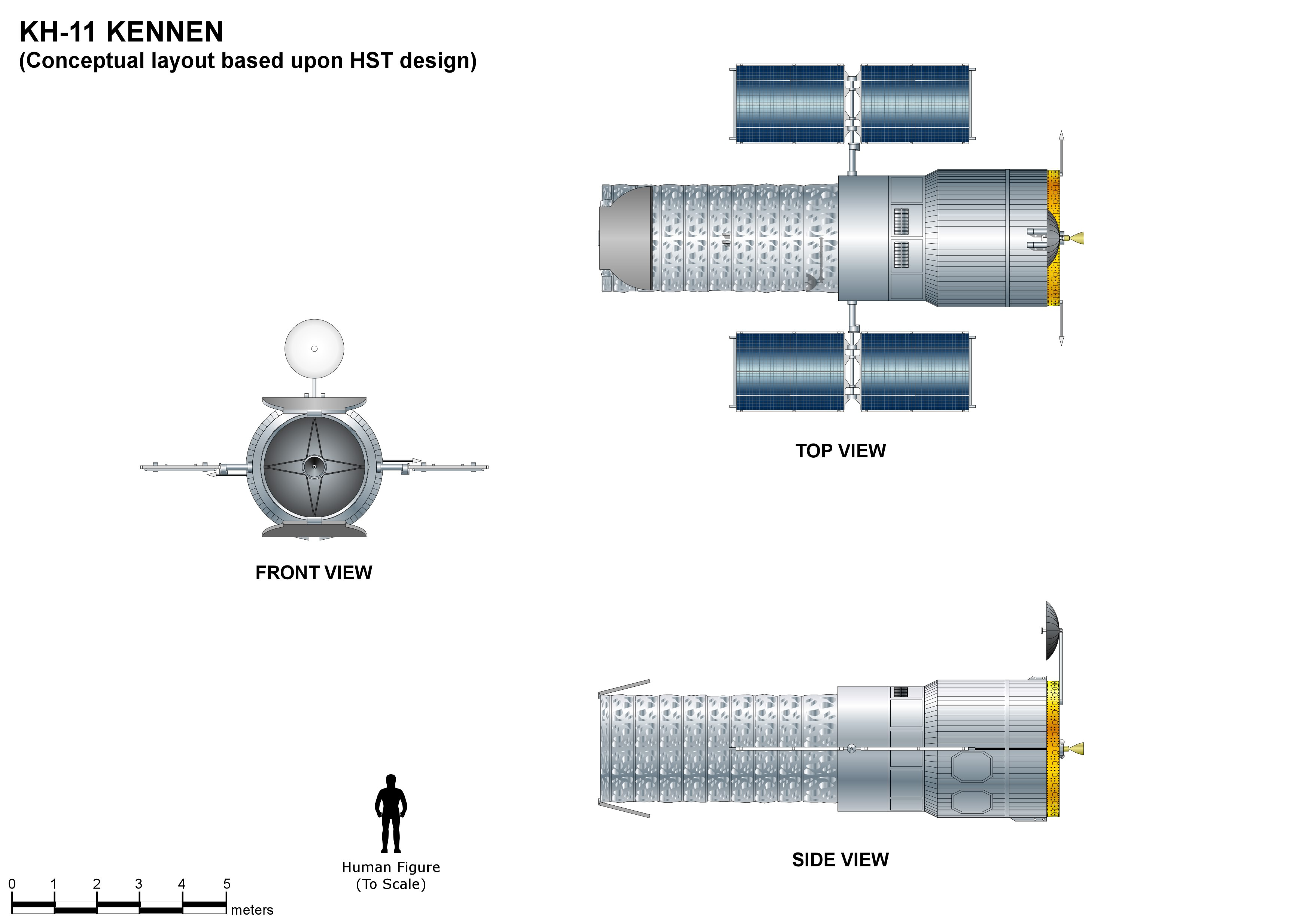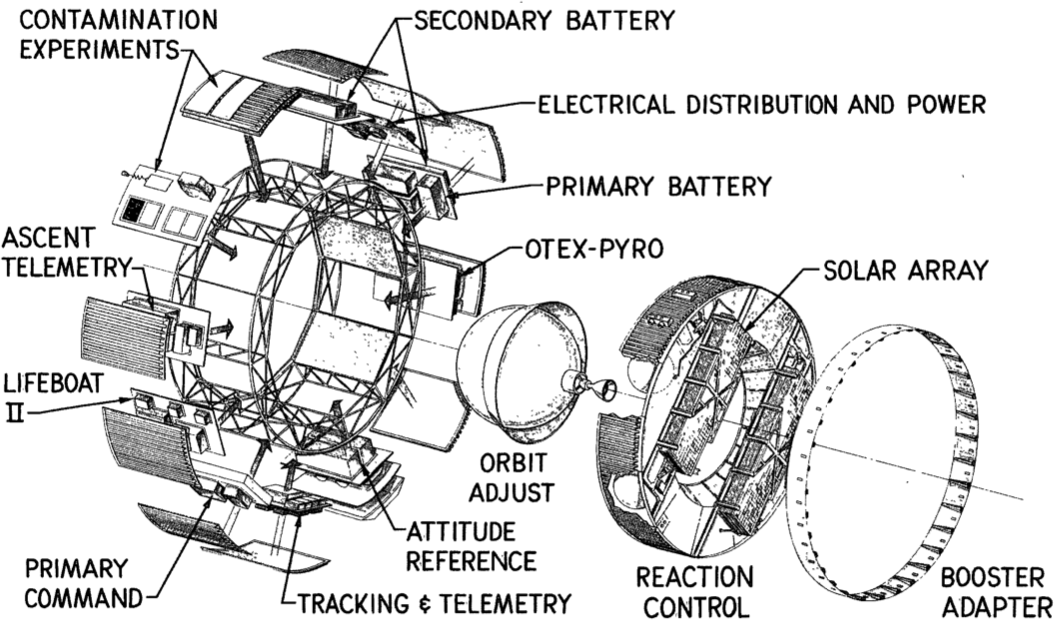|
KH-6 Lanyard
BYEMAN codenamed LANYARD, the KH-6 was the unsuccessful first attempt to develop and deploy a very high-resolution optical reconnaissance satellite by the United States National Reconnaissance Office. Launches and launch attempts spanned the period from March to July 1963. The project was quickly put together to get imagery of a site near Leningrad suspected of having anti-ballistic missiles. The satellite carried Itek's "E-5" camera developed for the SAMOS program, which had been cancelled. The camera had a focal length of and could discern objects on the ground in size. The ground swath of the camera was . The satellite weighed , and had a single re-entry vehicle in which exposed film was returned to earth for a mid-airFederation of American ScientistFASorg: ''KH-6''/ref> aircraft recovery. The KH-6 was manufactured by Lockheed Martin and launched from Vandenberg Air Force Base on Thor-Agena D launch vehicles. Launches * KH-6 8001 launch failed 18 March 1963NSSDC ID: P11 ... [...More Info...] [...Related Items...] OR: [Wikipedia] [Google] [Baidu] |
Reconnaissance Satellite
A reconnaissance satellite or intelligence satellite (commonly, although unofficially, referred to as a spy satellite) is an Earth observation satellite or communications satellite deployed for military or intelligence applications. The first generation type (i.e., Corona and Zenit) took photographs, then ejected canisters of photographic film which would descend back down into Earth's atmosphere. Corona capsules were retrieved in mid-air as they floated down on parachutes. Later, spacecraft had digital imaging systems and downloaded the images via encrypted radio links. In the United States, most information available about reconnaissance satellites is on programs that existed up to 1972, as this information has been declassified due to its age. Some information about programs before that time is still classified information, and a small amount of information is available on subsequent missions. A few up-to-date reconnaissance satellite images have been declassified o ... [...More Info...] [...Related Items...] OR: [Wikipedia] [Google] [Baidu] |
KH-5 Argon
KH-5 ARGON was a series of reconnaissance satellites produced by the United States from February 1961 to August 1964. The KH-5 operated similarly to the CORONA series of satellites, as it ejected a canister of photographic film. At least 12 missions were attempted, but at least 7 resulted in failure. The satellite was manufactured by Lockheed. Launches used Thor-Agena launch vehicles flying from Vandenberg Air Force Base, with the payload being integrated into the Agena. Payload Different versions of the satellite varied in mass from . At least two missions deployed ELINT subsatellites. Ground resolution for the satellite was , with a swath of . The onboard camera had a focal length of 76 mm. The purpose of the system, which produced relatively low-resolution images compared to other spy satellites, was to provide imagery for cartography purposes. This was one of the tasks that had originally been planned for the SAMOS series of satellites equipped with the (quickly canc ... [...More Info...] [...Related Items...] OR: [Wikipedia] [Google] [Baidu] |
Surveillance
Surveillance is the monitoring of behavior, many activities, or information for the purpose of information gathering, influencing, managing or directing. This can include observation from a distance by means of electronic equipment, such as closed-circuit television (CCTV), or interception of electronically transmitted information like Internet traffic. It can also include simple technical methods, such as Human intelligence (intelligence gathering), human intelligence gathering and postal interception. Surveillance is used by citizens for protecting their neighborhoods. And by governments for intelligence gathering - including espionage, prevention of crime, the protection of a process, person, group or object, or the investigation of crime. It is also used by criminal organizations to plan and commit crimes, and by businesses to Industrial espionage, gather intelligence on criminals, their competitors, suppliers or customers. Religious organisations charged with detecting he ... [...More Info...] [...Related Items...] OR: [Wikipedia] [Google] [Baidu] |
Cold War
The Cold War is a term commonly used to refer to a period of geopolitical tension between the United States and the Soviet Union and their respective allies, the Western Bloc and the Eastern Bloc. The term '' cold war'' is used because there was no large-scale fighting directly between the two superpowers, but they each supported major regional conflicts known as proxy wars. The conflict was based around the ideological and geopolitical struggle for global influence by these two superpowers, following their temporary alliance and victory against Nazi Germany and Imperial Japan in 1945. Aside from the nuclear arsenal development and conventional military deployment, the struggle for dominance was expressed via indirect means such as psychological warfare, propaganda campaigns, espionage, far-reaching embargoes, rivalry at sports events, and technological competitions such as the Space Race. The Western Bloc was led by the United States as well as a number of other First W ... [...More Info...] [...Related Items...] OR: [Wikipedia] [Google] [Baidu] |
Satellite Imagery
Satellite images (also Earth observation imagery, spaceborne photography, or simply satellite photo) are images of Earth collected by imaging satellites operated by governments and businesses around the world. Satellite imaging companies sell images by licensing them to governments and businesses such as Apple Maps and Google Maps. History The first images from space were taken on Sub-orbital spaceflight, sub-orbital flights. The U.S-launched V-2 flight on October 24, 1946, took one image every 1.5 seconds. With an Apsis, apogee of 65 miles (105 km), these photos were from five times higher than the previous record, the 13.7 miles (22 km) by the Explorer II balloon mission in 1935. The first satellite (orbital) photographs of Earth were made on August 14, 1959, by the U.S. Explorer 6. The first satellite photographs of the Moon might have been made on October 6, 1959, by the Soviet satellite Luna 3, on a mission to photograph the far side of the Moon. The Blue Marble ... [...More Info...] [...Related Items...] OR: [Wikipedia] [Google] [Baidu] |
KH-11 KENNEN
The KH-11 KENNEN (later renamed CRYSTAL,p.199-200 then Evolved Enhanced CRYSTAL System, and codenamed 1010 and Key Hole) is a type of reconnaissance satellite first launched by the American National Reconnaissance Office (NRO) in December 1976. Manufactured by Lockheed in Sunnyvale, California, the KH-11 was the first American spy satellite to use electro-optical digital imaging, and so offer real-time optical observations. Later KH-11 satellites have been referred to by outside observers as KH-11B or KH-12, and by the names "Advanced KENNEN", "Improved Crystal" and "Ikon". Official budget documents refer to the latest generation of electro-optical satellites as ''Evolved Enhanced CRYSTAL System''. The Key Hole series was officially discontinued in favor of a random numbering scheme after repeated public references to KH-7 GAMBIT, KH-8 GAMBIT 3, KH-9 HEXAGON, and KH-11 KENNEN satellites. The capabilities of the KH-11 are highly classified, as are images they produce. T ... [...More Info...] [...Related Items...] OR: [Wikipedia] [Google] [Baidu] |
Manned Orbital Laboratory
The Manned Orbiting Laboratory (MOL) was part of the United States Air Force (USAF) human spaceflight program in the 1960s. The project was developed from early USAF concepts of crewed space stations as reconnaissance satellites, and was a successor to the canceled Boeing X-20 Dyna-Soar military reconnaissance space plane. Plans for the MOL evolved into a single-use laboratory, for which crews would be launched on 30-day missions, and return to Earth using a Gemini B spacecraft derived from NASA's Gemini spacecraft and launched with the laboratory. The MOL program was announced to the public on 10 December 1963 as an inhabited platform to demonstrate the utility of putting people in space for military missions; its reconnaissance satellite mission was a secret black project. Seventeen astronauts were selected for the program, including Major Robert H. Lawrence Jr., the first African-American astronaut. The prime contractor for the spacecraft was McDonnell Aircraft Corporation; ... [...More Info...] [...Related Items...] OR: [Wikipedia] [Google] [Baidu] |
Manned Orbiting Laboratory
The Manned Orbiting Laboratory (MOL) was part of the United States Air Force (USAF) human spaceflight program in the 1960s. The project was developed from early USAF concepts of crewed space stations as reconnaissance satellites, and was a successor to the canceled Boeing X-20 Dyna-Soar military reconnaissance space plane. Plans for the MOL evolved into a single-use laboratory, for which crews would be launched on 30-day missions, and return to Earth using a Gemini B spacecraft derived from NASA's Gemini spacecraft and launched with the laboratory. The MOL program was announced to the public on 10 December 1963 as an inhabited platform to demonstrate the utility of putting people in space for military missions; its reconnaissance satellite mission was a secret black project. Seventeen astronauts were selected for the program, including Major Robert H. Lawrence Jr., the first African-American astronaut. The prime contractor for the spacecraft was McDonnell Aircraft Corporati ... [...More Info...] [...Related Items...] OR: [Wikipedia] [Google] [Baidu] |
Big Bird (satellite)
KH-9 ( BYEMAN codename HEXAGON), commonly known as Big Bird or KeyHole-9, p.32 Big Bird was a series of photographic reconnaissance satellites launched by the United States between 1971 and 1986. Of twenty launch attempts by the National Reconnaissance Office, all but one were successful. Photographic film aboard the KH-9 was sent back to Earth in recoverable film return capsules for processing and interpretation. The highest ground resolution achieved by the main cameras of the satellite was . Another source says "images in the "better-than-one-foot" category" for the last "Gambit" missions. They are also officially known as the Broad Coverage Photo Reconnaissance satellites (Code 467), built by Lockheed Corporation for the National Reconnaissance Office (NRO). The satellites were an important factor in determining Soviet military capabilities and in the acquisition of accurate intelligence for the formulation of U.S. national policy decisions as well as deployment of U.S. f ... [...More Info...] [...Related Items...] OR: [Wikipedia] [Google] [Baidu] |
KH-9 Hexagon
KH-9 ( BYEMAN codename HEXAGON), commonly known as Big Bird or KeyHole-9, p.32 Big Bird was a series of photographic reconnaissance satellites launched by the United States between 1971 and 1986. Of twenty launch attempts by the National Reconnaissance Office, all but one were successful. Photographic film aboard the KH-9 was sent back to Earth in recoverable film return capsules for processing and interpretation. The highest ground resolution achieved by the main cameras of the satellite was . Another source says "images in the "better-than-one-foot" category" for the last "Gambit" missions. They are also officially known as the Broad Coverage Photo Reconnaissance satellites (Code 467), built by Lockheed Corporation for the National Reconnaissance Office (NRO). The satellites were an important factor in determining Soviet military capabilities and in the acquisition of accurate intelligence for the formulation of U.S. national policy decisions as well as deployment of U.S. f ... [...More Info...] [...Related Items...] OR: [Wikipedia] [Google] [Baidu] |
KH-8 Gambit 3
The KH-8 ( BYEMAN codename Gambit-3) was a long-lived series of reconnaissance satellites of the "Key Hole" (KH) series used by the United States from July 1966 to April 1984, and also known as Low Altitude Surveillance Platform. The satellite ejected "film-bucket" canisters of photographic film that were retrieved as they descended through the atmosphere by parachute. Ground resolution of the mature satellite system was better than . There were 54 launch attempts of the 3,000 kilogram satellites, all from Vandenberg Air Force Base, on variants of the Titan III rocket. Three launches failed to achieve orbit. The first one was satellite #5 on April 26, 1967 which fell into the Pacific Ocean after the Titan second stage developed low thrust. The second was satellite #35 on May 20, 1972 which suffered an Agena pneumatic regulator failure and reentered the atmosphere. A few months later, pieces of the satellite turned up in England and the US managed to arrange for their hasty retu ... [...More Info...] [...Related Items...] OR: [Wikipedia] [Google] [Baidu] |
KH-7 Gambit
BYEMAN codenamed GAMBIT, the KH-7 (Air Force Program 206) was a reconnaissance satellite used by the United States from July 1963 to June 1967. Like the older CORONA system, it acquired imagery intelligence by taking photographs and returning the undeveloped film to earth. It achieved a typical ground-resolution of to . Though most of the imagery from the KH-7 satellites was declassified in 2002, details of the satellite program (and the satellite's construction) remained classified until 2011. In its summary report following the conclusion of the program, the National Reconnaissance Office concluded that the GAMBIT program was considered highly successful in that it produced the first high-resolution satellite photography, 69.4% of the images having a resolution under ; its record of successful launches, orbits, and recoveries far surpassed the records of earlier systems; and it advanced the state of the art to the point where follow-on larger systems could be developed an ... [...More Info...] [...Related Items...] OR: [Wikipedia] [Google] [Baidu] |


.jpg)

.png)


.jpg)



